Skywatching Events for July 2011
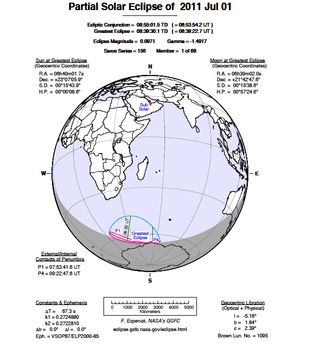
Here's a look at the most promising skywatching events of July 2011:
Moon Phases
Fri., July 1, 4:54 a.m. EDT
New Moon
The Moon is not visible on the date of New Moon because it is too close to the Sun, but can be seen low in the east as a narrow crescent a morning or two before, just before sunrise. It is visible low in the west an evening or two after New Moon.
Fri., July 8, 2:29 a.m. EDT
First Quarter Moon
The First Quarter Moon rises around 1 p.m., and sets around midnight.
Fri., July 15, 2:40 a.m. EDT
Full Moon
The Full Moon of July is usually known as the Hay Moon. In Algonquian it is called Buck Moon. Other names are Thunder Moon and Mead Moon. In Hindi it is known as Guru Purnima. Its Sinhala (Buddhist) name is Esala Poya. The Full Moon rises around sunset and sets around sunrise, the only night in the month when the Moon is in the sky all night long. The rest of the month, the Moon spends at least some time in the daytime sky.
Sat., July 23, 1:02 a.m. EDT
Last Quarter Moon
The Last or Third Quarter Moon rises around midnight and sets around 1 p.m. It is most easily seen just after sunrise in the southern sky.
Sat., July 30, 2:40 p.m. EDT
New Moon
This month is unusual for having two New Moons. We call the second Full Moon in a month a “blue Moon” but we have no special name for a second New Moon.
Observing Highlights
Fri., July 1
Partial Solar Eclipse
The eclipse no one will see. This partial solar eclipse is visible only in a limited stretch of the Antarctica coastline, and the adjoining stretch of the Antarctic Ocean. The partially eclipsed Sun will peek just above the northern sea horizon at midday.
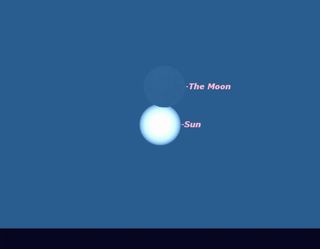
Wed., July 6, twilight
Mercury in the Beehive
The planet Mercury passes through the middle of the Beehive Cluster (Messier 44) tonight at dusk. Best seen in the Southern Hemisphere.
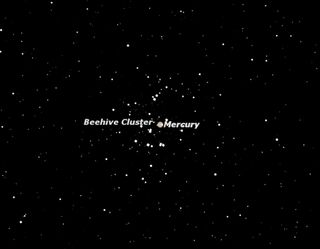
Tue., July 12, 6:27 p.m. EDT
Happy Birthday Neptune!
It is exactly one Neptunian year (or 165 Earth years) today since the discovery of Neptune on September 23, 1846.

Wed. July 20, evening twilight
Mercury at greatest elongation east
Mercury will be well placed for observation in the evening dusk, especially in the Southern Hemisphere.
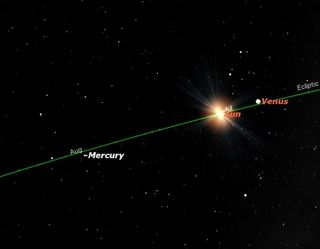
Wed. July 27, morning twilight
Mars 0.5 degrees north of the Moon
Mercury will be well placed for observation in the evening dusk, especially in the southern hemisphere.
Get the Space.com Newsletter
Breaking space news, the latest updates on rocket launches, skywatching events and more!

Fri. July 29, 10 a.m. EDT
Pallas at opposition
Now that Ceres has been promoted to dwarf planet status that makes Pallas, 524 km in diameter, the largest asteroid. It reaches opposition in the small but easily identified constellation of Sagitta, the arrow. Messier objects 27 (the Dumbbell Nebula) and 71 (a small globular cluster) are nearby. Watch Pallas for a few minutes in a telescope, and you will see it move against the background stars.
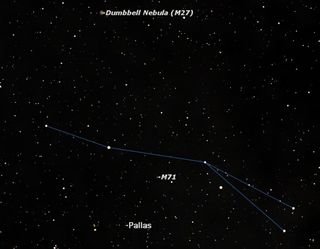
Planets
Mercury is an evening object in the western sky at dusk for the second half of the month.
Venus disappears behind the Sun early in the month.
Mars is in the eastern sky just before dawn. It spends all of the month in the constellation Taurus, but is outshone by the red giant star Aldebaran.
Jupiter rises well after midnight, and then dominates the western sky until dawn. It spends the whole month in the constellation Aries.
Saturn is in the evening sky in the constellation Virgo, setting around midnight.
Uranus is in Pisces all month, visible before dawn.
Neptune is a morning object in Aquarius, visible in binoculars or a small telescope.
This article was provided to SPACE.com by Starry Night Education, the leader in space science curriculum solutions. Follow Starry Night on Twitter @StarryNightEdu.
Join our Space Forums to keep talking space on the latest missions, night sky and more! And if you have a news tip, correction or comment, let us know at: community@space.com.

Geoff Gaherty was Space.com's Night Sky columnist and in partnership with Starry Night software and a dedicated amateur astronomer who sought to share the wonders of the night sky with the world. Based in Canada, Geoff studied mathematics and physics at McGill University and earned a Ph.D. in anthropology from the University of Toronto, all while pursuing a passion for the night sky and serving as an astronomy communicator. He credited a partial solar eclipse observed in 1946 (at age 5) and his 1957 sighting of the Comet Arend-Roland as a teenager for sparking his interest in amateur astronomy. In 2008, Geoff won the Chant Medal from the Royal Astronomical Society of Canada, an award given to a Canadian amateur astronomer in recognition of their lifetime achievements. Sadly, Geoff passed away July 7, 2016 due to complications from a kidney transplant, but his legacy continues at Starry Night.
